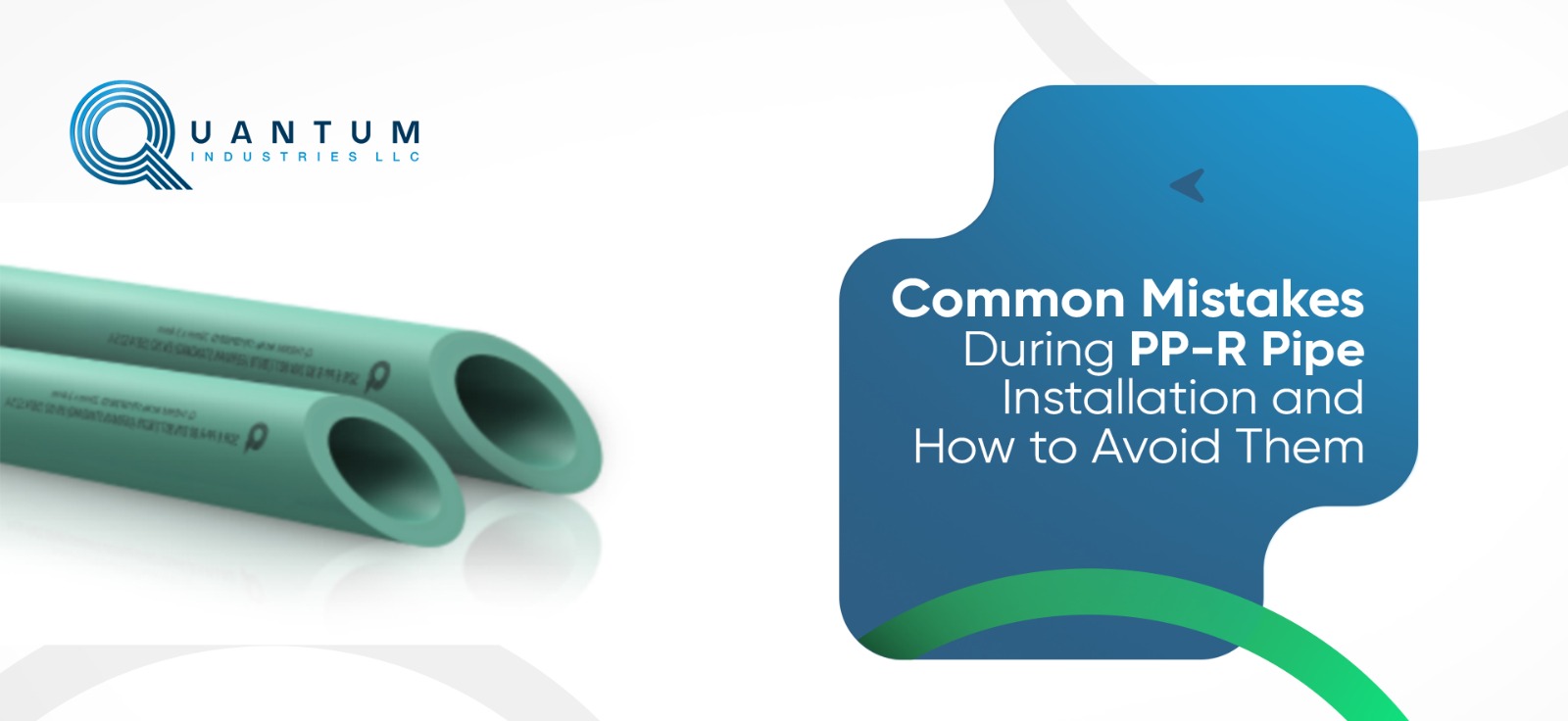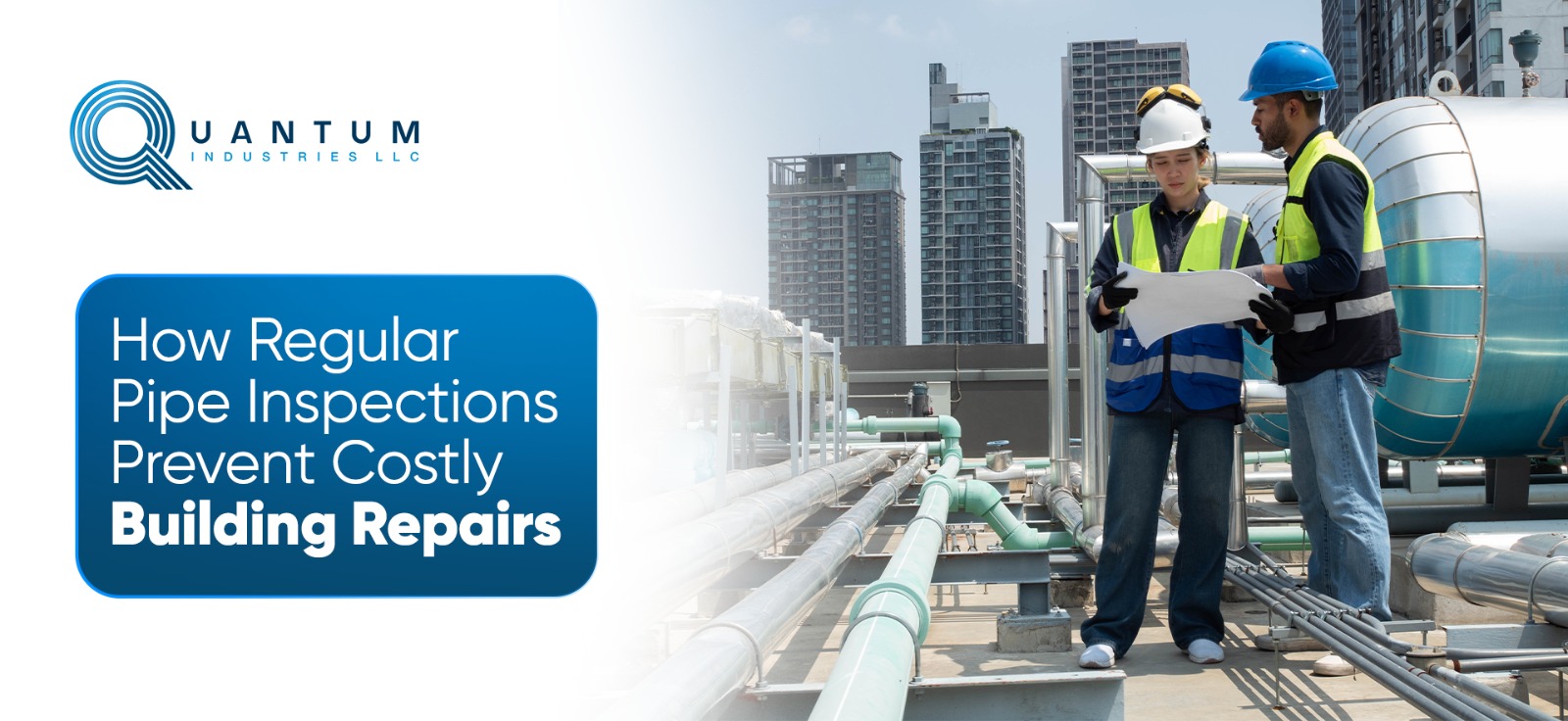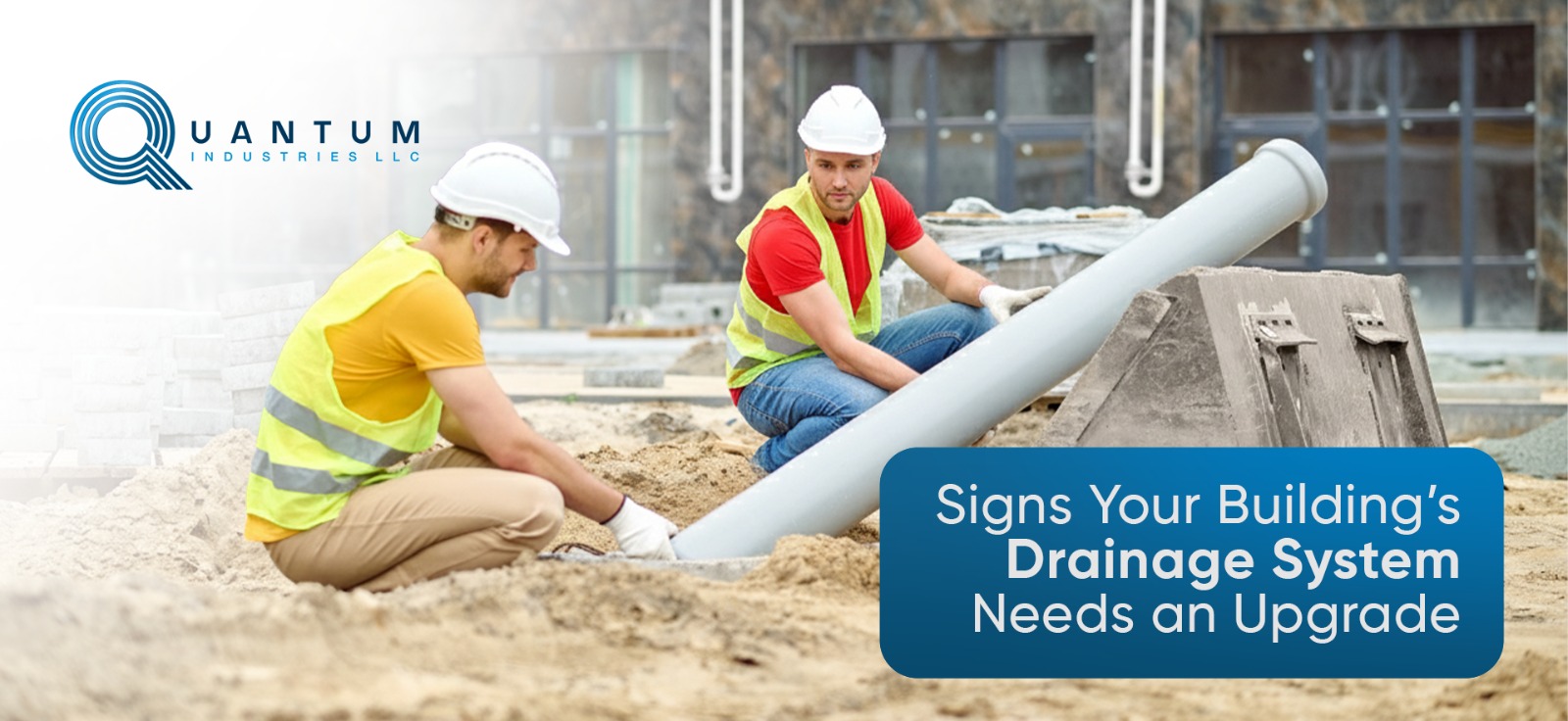



Pipes like Polypropylene Random Copolymer (PP-R) have revolutionised HVAC and plumbing systems throughout the United Arab Emirates due to their effective corrosion resistance, thermal stability, and a lifespan of more than 50 years. These pipes are ideal for environmentally friendly building in Dubai, Abu Dhabi, and elsewhere due to their lightweight design and fusion-welded joints, which do not require toxic solvents.
However, installation problems are heightened by the unfriendly climate in the region, which includes mineral-rich water, burning temperatures, and harsh sandstorms. This "maintenance-free" approach might become a nightmare due to flooding with just one mistake. This article analyses eight common mistakes during PP-R Pipe installation and how to avoid them in order to guarantee leak-proof durability.
Even experienced professionals sometimes fail to thoroughly remove all surface impurities, such as dust, grease, and moisture, from the ends of both the pipe and the fitting before the fusion welding process.
These contaminants can form tiny gaps or inclusions within the joint by getting trapped at the interface during the fusion process. Small imperfections like these can significantly compromise the joint's ability to prevent leaks and reduce its long-term strength under system pressure.
You should carefully examine the cut ends right before welding, and thoroughly clean them using the designated non-fibrous coarse tissue or cloth, following the established cleaning protocol. This extra care ensures a spotless surface for a strong, reliable fusion.
Not setting the welding device's thermostat to the precise required value. Failing to do so or neglecting to verify that the actual socket temperature reaches this specification before commencing welding operations can cause bigger issues.
Risk:
Setting the temperature too low can prevent the material from fusing properly, leading to weak joints that may fail over time. On the other hand, setting the temperature too high can cause the PP-R material to break down due to excessive heat, resulting in joints that aren't as strong or reliable as they should be.
Solution:
Always set the welding device thermostat precisely to 260°C (498°F). Crucially, after the initial warm-up period (5-20 minutes, indicated by the thermostat lamp switching off), verify the actual temperature of the welding socket surfaces using calibrated temperature measuring instruments to confirm operational readiness.
Mounting the welding sockets (mandrel and collar) incorrectly onto the welding plate surface, such as loosely or in a disorganised manner.
Incorrect mounting leads directly to uneven heating profiles across the pipe end and fitting socket. This, combined with potential instability, causes misalignment when joining the heated components, resulting in joints prone to catastrophic failure under operational pressure loads.
Make sure all the welding sockets are securely attached to the welding plate, so they don't come loose. Organise tools logically by placing smaller-diameter sockets towards the front of the device and larger-diameter sockets towards the rear. Critically, ensure no part of any mounted socket extends beyond the edge of the welding plate itself.
Attempting to join the heated pipe end and fitting together too hastily, without taking the necessary care to achieve perfectly precise coaxial alignment before and during contact.
Misaligned joints cause significant internal shear stress within the joint immediately after it solidifies. Stress concentration caused by this will drastically reduce the joint's impact resistance while also undermining its long-term structural reliability within the piping system.
Immediately after removing the components from the heater, press the pipe end squarely and evenly into the fitting socket in a smooth, direct motion. Maintain firm, steady pressure without any rotational twisting whatsoever throughout the critical initial short cooling phase.
Conducting the fusion welding procedure without utilising the complete set of mandated personal protective equipment (PPE).
Exposure to the extremely high temperatures (approximately 300°C / 572°F) of the heating elements and molten plastic presents a severe hazard. This leads to serious burns or other injuries during tool handling or the joining process.
Mandate the use of comprehensive safety garments before you involve in any welding activity. Different essential protection gears must include appropriate head protection, impact-resistant eye protection (such as safety glasses or goggles), certified heat-resistant gloves, and suitable footwear.
Overlooking the correct sequence of steps for shutting down, cooling, cleaning, and storing the welding device after completing welding tasks.
Handling the machines improperly causes accelerated wear, potential damage to the heating elements or sockets, shortens the equipment's operational lifespan, all while increasing the risks of leaving contaminants that will affect the quality of subsequent welds.
Follow the steps outlined in the post-use procedure.
Attempting to directly fuse PP-R pipes or fittings with components made from different, non-PP-R materials without employing the correct transition methodology.
Materials of different kinds have chemical and physical incompatibility. Direct fusion creates joints that are vulnerable to degradation, delamination, or leakage. This becomes a huge issue, especially in potable water systems where integrity is vital.
Use only pipes and fittings explicitly manufactured from PP-R material and designed specifically for thermal fusion joining, like QTherm from Quantum Industries. Any required transition to pipes or fittings of a different material (e.g., metal, PVC, PE) must be accomplished exclusively using adapters explicitly approved for this purpose by the PP-R system manufacturer.
Applying mechanical stress, pressure, or handling the newly welded joint before the molten PP-R material has fully solidified and achieved sufficient strength.
Subjecting the semi-molten material to load causes permanent deformation of the joint geometry or disrupts the molecular bonding process, resulting in immediate or latent leakage paths.
Allow the completed joint to cool undisturbed for the entire duration specified by the pipe and fitting manufacturer. This cooling time is absolute; never attempt to accelerate it using water, air, or any other force-cooling method, as this can induce damaging thermal stresses.
Common PP-R pipe mistakes include:
Proper heating ensures leak-proof joints. Too little heat leads to weak joints that are prone to failure. Too much heat can cause material degradation. Always use a PP-R welding machine with precise temperature control.
Prevent PP-R leaks by following these critical steps:
Yes, but use transition fittings only!
Pressure test the fully installed, unconcealed pipes according to DIN 1988.

